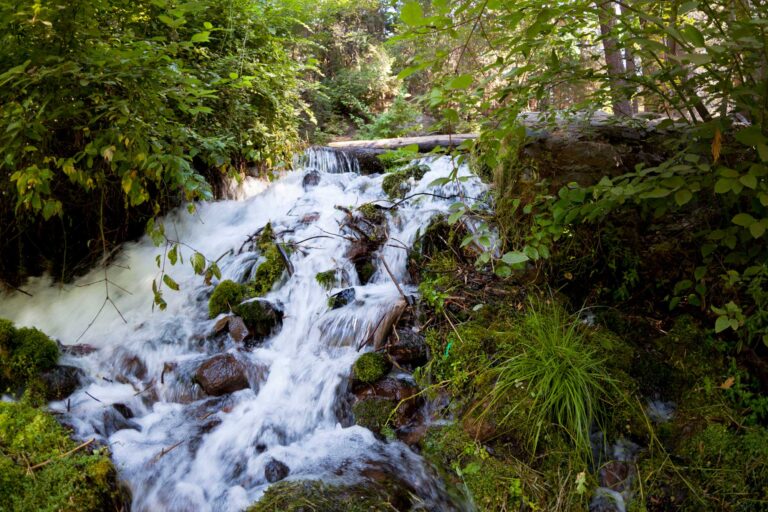In spring 2021, PPIC organized seven focus groups to explore how to pay for headwater forest management. This work was done in collaboration with Van Butsic, Heidi Huber-Stearns, Erin Kelly, and Ryan Tompkins. This is the third post in a series of four.
Forest managers, community and environmental stakeholders, and policymakers alike have called for an increase in the pace and scale of proactive forest management. This work is essential to reducing wildfire risk and improving forest health. Getting there means becoming more ambitious about the size of forest management projects; this will require bringing together diverse funding streams and stakeholders, and working effectively across a patchwork of ownerships. Water agencies may be well placed to take on a leading role—based on the value they receive from reducing wildfire risk, their high capacity to manage complex projects, and their watershed-scale management approach.
Water agencies across the West are already engaging in important ways. Utilities on Colorado’s Front Range—such as Denver Water—have been investing in forest health projects in their source watersheds since 2010. In New Mexico, utilities have actively participated in the Rio Grande Water Fund, which supports fuel management work in source watersheds. And here in California, some forward-looking agencies are playing key roles in larger, more complex efforts.
Two examples show how water agencies could catalyze more ambitious headwater forest management efforts across the state.
Placer County Water Agency (PCWA) was one of the first water utilities in California to dive into improving the health of headwater forests back in 2016. Extensive damage and the high costs of post-fire erosion following the King Fire of 2014 motivated PCWA to collaborate on a 28,000-acre forest management project. Partners include the U.S. Forest Service, state and local governments, and several non-profits, with the common goal of ecological forest management
PCWA’s experience helped spur the Yuba Water Agency (YWA) to promote an even larger collaborative forest management project in the north Yuba River watershed. YWA manages this watershed for water supply, flood control, aquatic ecosystems, and recreation. In 2018, YWA partnered with Blue Forest Conservation and the U.S. Forest Service to pilot an innovative public-private funding tool for forest management work. The pilot brought two new funding partners to the table: private impact investors (identified by Blue Forest) and a local water agency (YWA). The success of this early effort led the coalition to scale up to 30,000 acres—out of a total 275,000 acres.
These projects are two of the largest in the state. While their implementation will take many years, they show that water agencies can be leaders in headwater forest stewardship. Indeed, there are multiple reasons why water agencies are a good match for this work:
- Water agencies will benefit from headwater forest management. Utilities depend on these source watersheds for their water supplies. Large wildfires can disrupt water systems and impose major costs. For example, the King Fire temporarily interfered with reservoir functioning and resulted in an estimated clean-up cost of $8 million. In a future with increasing fire activity, avoiding such costs will be an important aspect of water resource management.
- Water agencies bring financial, technical, and administrative resources to the table. In the examples described above, utilities are bringing their own funding to forest health efforts. For example, Yuba Water Agency invested $1.5 million in their pilot project in 2018. Water agencies also have substantial technical and administrative capacity, an important component of successful project management.
- Water agencies thrive in partnership. For several decades, many of California’s water agencies have been actively pursuing partnerships with a variety of agencies and stakeholders to manage their water systems for multiple benefits. This experience makes them primed to take on new partnerships in the forest management arena. PCWA and YWA both have excelled at working with diverse stakeholders to tackle tough challenges, and this can happen elsewhere.
Some western water agencies are investing in headwater forest management as a way to protect source watersheds from wildfire. These efforts show that water agencies are uniquely suited to help lead large, complex forest management projects. We recommend that the governor’s Office of Planning and Research work with water agency coalitions such as the Association of California Water Agencies to encourage more water agencies to engage in headwater forest management proactively, before disaster strikes.






